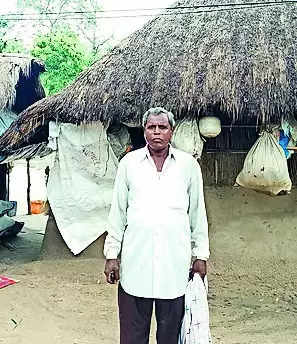Bangladesh: K’pada villagers worry about relatives in strife-torn Bangladesh | Bhubaneswar News

Kendrapada: Asit Mirdha (57) and his family members of Hariabanka village in Kendrapada district are glued to news channels these days listening to reports of the violence in Bangladesh. Every picture of disturbance leaves his heart pounding in fear and anxiety as Asit’s elder sister, Kalpana Biswas (60), lives in Shyamnagar village in Khulna district of the neighbouring country.
“We are worried over the recent developments in Bangladesh.My sister told me over the phone that a war-like situation is prevailing in many parts. I last spoke to her on Saturday. Arun Mandal, my sister’s son-in-law, sustained serious injuries a few days back when a group of miscreants attacked his house. We are praying for their safety,” said Asit.
Narayan Das (82) of Kharinashi village is also concerned about the well-being of his relatives in Barisal district.
“I am quite upset about the situation in Bangladesh. In 1950, my father, two brothers and me came to Kharinashi from Barisal district. But many of our relatives are still in Bangladesh,” said Narayan while showing his refugee certificate issued by the govt on Sept 14, 1950. “This certificate gave me status as an Indian citizen,” he added.
Asit and Narayan are not alone. In Kendrapada district, there are at least 4,000-odd people who have relatives in Bangladesh.
Seaside villages under Mahakalapada and Rajnagar blocks are home to around 50,000 Bangladeshi Hindu refugees. Most of them came from then East Pakistan (now Bangladesh) in 1947 and in the 1970s during the liberation war.
“My grandfather came to the village in 1948 as a refugee. But in 2005, the district administration had served ‘Quit India’ notices to me and my family members branding us illegal immigrants. The NDA govt has taken a good decision to grant citizenship to Hindus, Sikhs, Buddhists, Jains, Parsis and Christians from Afghanistan, Bangladesh and Pakistan under CAA. We have some relatives in Bangladesh. We are worried about the situation in that country,” said Sagar Mandal of Badatubi village.
“We are worried over the recent developments in Bangladesh.My sister told me over the phone that a war-like situation is prevailing in many parts. I last spoke to her on Saturday. Arun Mandal, my sister’s son-in-law, sustained serious injuries a few days back when a group of miscreants attacked his house. We are praying for their safety,” said Asit.
Narayan Das (82) of Kharinashi village is also concerned about the well-being of his relatives in Barisal district.
“I am quite upset about the situation in Bangladesh. In 1950, my father, two brothers and me came to Kharinashi from Barisal district. But many of our relatives are still in Bangladesh,” said Narayan while showing his refugee certificate issued by the govt on Sept 14, 1950. “This certificate gave me status as an Indian citizen,” he added.
Asit and Narayan are not alone. In Kendrapada district, there are at least 4,000-odd people who have relatives in Bangladesh.
Seaside villages under Mahakalapada and Rajnagar blocks are home to around 50,000 Bangladeshi Hindu refugees. Most of them came from then East Pakistan (now Bangladesh) in 1947 and in the 1970s during the liberation war.
“My grandfather came to the village in 1948 as a refugee. But in 2005, the district administration had served ‘Quit India’ notices to me and my family members branding us illegal immigrants. The NDA govt has taken a good decision to grant citizenship to Hindus, Sikhs, Buddhists, Jains, Parsis and Christians from Afghanistan, Bangladesh and Pakistan under CAA. We have some relatives in Bangladesh. We are worried about the situation in that country,” said Sagar Mandal of Badatubi village.
We also published the following articles recently
BSF holds coordination meeting with villagers at Indo-Bangladesh border
The BSF held coordination meetings in border villages to create a sense of security among locals. On August 7, Bangladeshi gatherings near the International Boundary were swiftly managed by BSF, Border Guard Bangladesh, and local authorities. Additional forces were deployed, and there was no significant movement of minorities to the Indian border.
The BSF held coordination meetings in border villages to create a sense of security among locals. On August 7, Bangladeshi gatherings near the International Boundary were swiftly managed by BSF, Border Guard Bangladesh, and local authorities. Additional forces were deployed, and there was no significant movement of minorities to the Indian border.
Some districts of Assam have turned into mini Bangladesh: CM Himanta Biswa Sarma
Assam’s chief minister, Himanta Biswa Sarma, claimed that demographic changes have transformed some districts into ‘mini Bangladesh’ with significant declines in the Hindu population. He emphasized that the state government’s presence ensures the protection of minorities and highlighted the importance of maintaining unity and fulfilling responsibilities towards religious institutions to safeguard their future.
Assam’s chief minister, Himanta Biswa Sarma, claimed that demographic changes have transformed some districts into ‘mini Bangladesh’ with significant declines in the Hindu population. He emphasized that the state government’s presence ensures the protection of minorities and highlighted the importance of maintaining unity and fulfilling responsibilities towards religious institutions to safeguard their future.
















